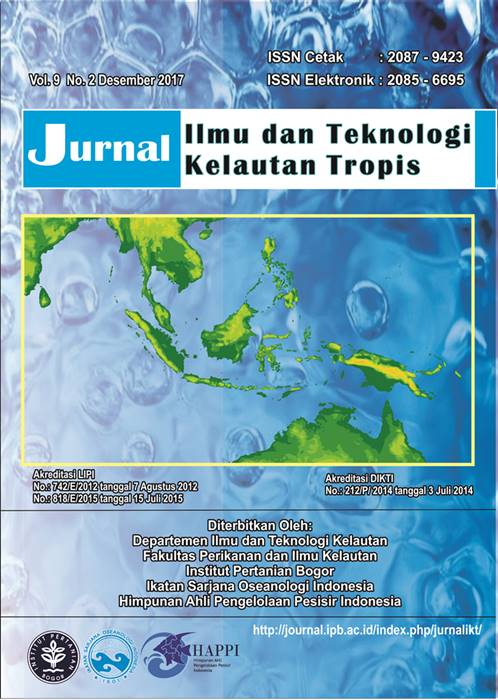AMINO ACID PROFILE AND BIOACTIVE COMPOUNDS OF SEAHORSE Hippocampus comes
Abstract
Seahorse is one of the marine living resources usually used as ornamental fish, traditional medicinal materials, and souvenirs. The purpose of the study was to determine the proximate composition of wet and dry seahorses, determine the profile of amino acid hydrolyzate and powder of seahorses, and determines to content of bioactive compounds from the ethanol extract of seahorses on qualitatively. The sample of this study is seahorses obtained from nature. Prviously, seahorses were morphometric identified, subsequently, seahorses were made of the powder, hydrolyzate, and ethanol extract. Several analyzes used were qualitative analysis of proximate, amino acid, and phytochemical analysis. Morphometric identification results indicate that the type is Hippocampus comes. The proximate composition is water content is 66.16 ± 0.33% (wet) and 10.33 ± 0.16% (dry), ash content of 9.55 ± 0.15% (wet) and 9.65 ± 0.16% (dry), lipid content 1.18 ± 0.23% (wet) and 4.89 ± 0.37% (dry), protein content of 22.73 ± 0.17% (wet) and 69.83 ± 0.31% (dry), carbohydrate 0.39 ± 0.23 (wet) and 5.50 ± 0.34 (dry). The amino acid composition both on hydrolyzate and powder comprising 9 essential amino acids are lysine, leucine, isoleucine, phenylalaline, valine, methionine, histidine, arginine, and threonine and 6 non essential amino acids are tyrosine, alanine, glycine, serine, glutamic acid, and aspartic acid. The results of identification of bioactive compounds is flavonoids, triterpenoids, steroids, saponins, and phenol of hydroquinone.
Keywords: Hippocampus comes, proximate analysis, amino acid, and bioactive compounds
Authors
The author submitting the manuscript must understand and agree that the copyright of the article manuscript must be submitted/transferred to the Jurnal Ilmu dan Teknologi Kelautan Tropis. This work is licensed under the Creative Commons Attribution-ShareAlike 4.0 (CC BY-SA) International License in which the Author and Reader can copy and redistribute the material in any media or format, and remix, modify and build material for any purpose, but they must provide appropriate credit (citing articles or content), provide a link to the license, and indicate whether there is a change. If you mix, change, or create material, you must distribute your contribution under the same license as the original.


